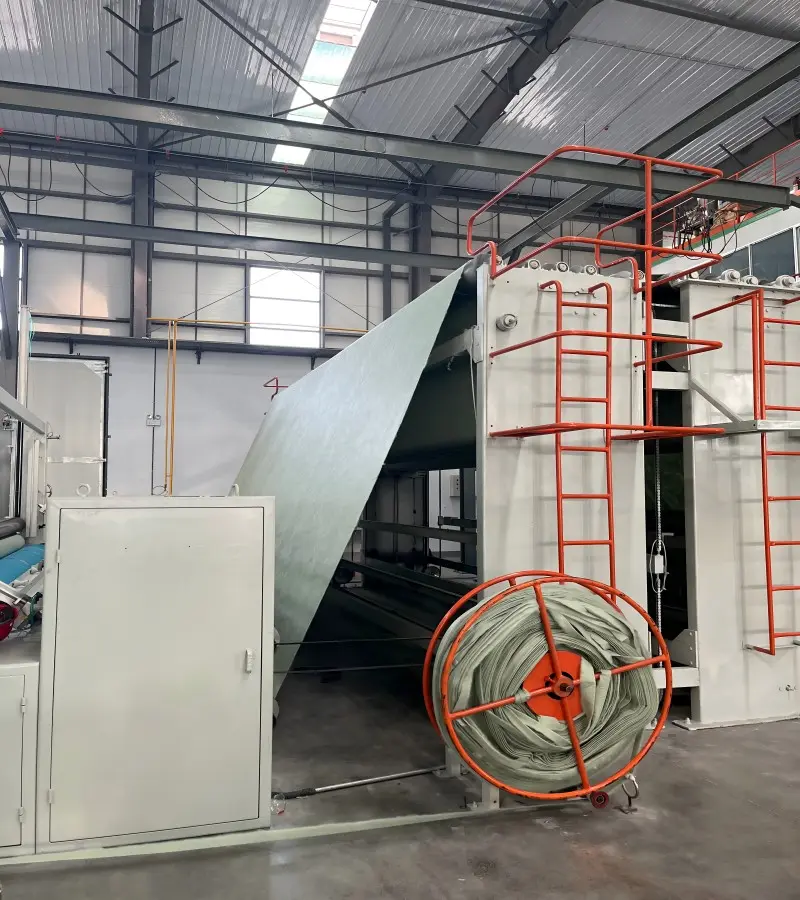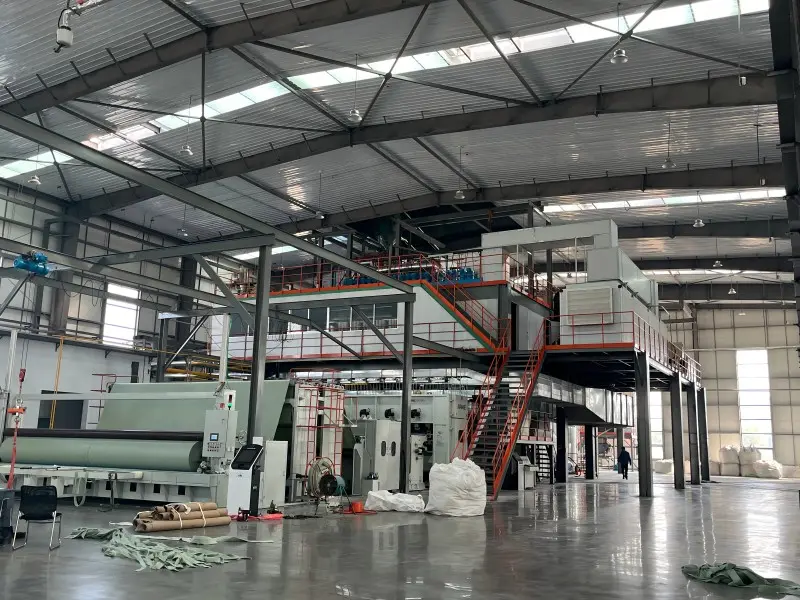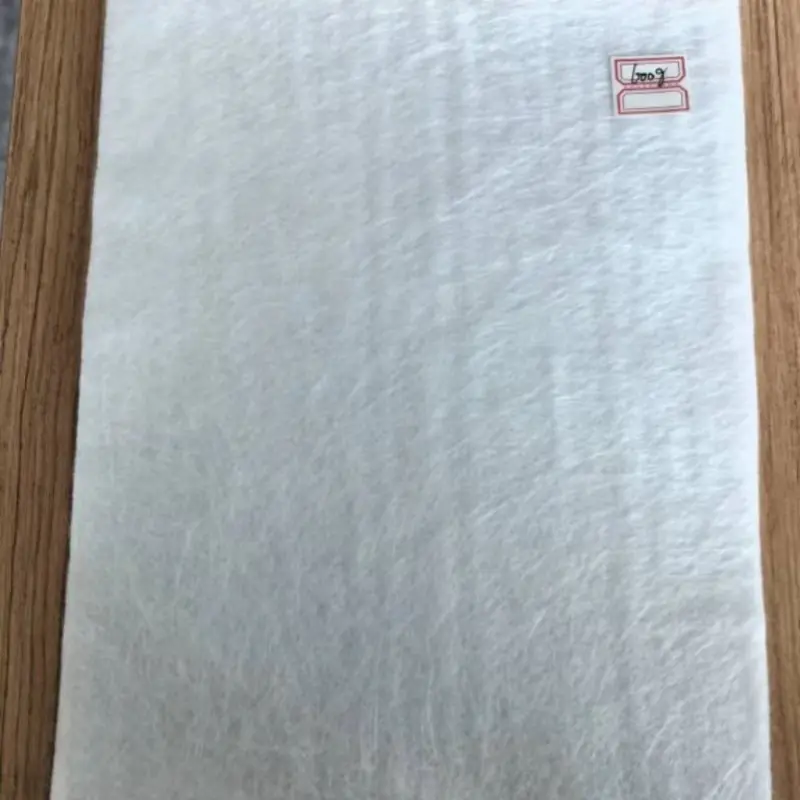Geotextiles have become an essential component in modern road construction, offering improved stability, durability, and longevity for various types of roadways. These engineered fabrics are designed to perform multiple functions such as separation, filtration, reinforcement, and drainage, making them indispensable in road projects. This article will explore the role of geotextiles in road construction, provide a detailed specifications table, a price list, and explain how to use them effectively in different road-building scenarios.
What Are Geotextiles in Road Construction?

Geotextiles are permeable fabrics made from polymers like polypropylene (PP) or polyethylene (PE), and they are used to enhance the performance of soil in civil engineering applications. When incorporated into road construction, geotextiles help to reinforce the soil, improve load-bearing capacity, prevent soil mixing, and provide drainage. There are two primary types of geotextiles used in road construction:
Woven Geotextiles: Made by weaving synthetic fibers, these geotextiles are strong and have low elongation. They are commonly used for soil reinforcement and stabilization.
Non-Woven Geotextiles: Produced by bonding fibers together, usually through heat or chemical processes, these geotextiles are known for their excellent filtration and drainage properties.
Specifications Table for Geotextile in Road Construction
| Specification | Description |
|---|---|
| Material | Polypropylene (PP) or Polyester (PET) |
| Type | Woven and Non-Woven Geotextile |
| Weight | 150gsm - 600gsm (grams per square meter) |
| Width | 1m - 6m (custom widths available) |
| Length per Roll | 50m - 200m (varies with weight) |
| Tensile Strength | 20 kN/m - 100 kN/m (depending on weight and type) |
| Elongation at Break | ≤ 50% for woven, ≤ 70% for non-woven |
| Water Permeability | 0.1mm/s - 0.5mm/s (varies with fabric density) |
| UV Resistance | UV-stabilized for outdoor use |
| Temperature Range | -40°C to 80°C (-40°F to 176°F) |
| Puncture Resistance | High resistance to sharp objects and abrasive conditions |
| Applications | Road stabilization, subgrade separation, drainage, erosion control |
| Compliance | Meets ISO, ASTM standards for geotechnical applications |
Price List for Geotextile for Road Construction
| Weight (gsm) | Tensile Strength (kN/m) | Roll Size | Factory Price (USD per Square Meter) | Factory Price (USD per Roll) | Application |
|---|---|---|---|---|---|
| 150 gsm | 20 kN/m | 100m x 2m | $0.40 - $0.60 | $80 - $120 | Light-duty roadways, soil separation |
| 200 gsm | 30 kN/m | 100m x 2m | $0.60 - $0.80 | $120 - $160 | Road subgrade stabilization |
| 300 gsm | 50 kN/m | 50m x 2m | $0.80 - $1.00 | $80 - $100 | Heavy-duty road reinforcement, drainage |
| 400 gsm | 70 kN/m | 50m x 2m | $1.10 - $1.40 | $110 - $140 | Erosion control, base course separation |
| 500 gsm | 90 kN/m | 50m x 2m | $1.40 - $1.80 | $140 - $180 | High-traffic roads, slope reinforcement |
| 600 gsm | 100 kN/m | 50m x 2m | $1.80 - $2.20 | $180 - $220 | Large-scale infrastructure projects |
Note: Prices can vary depending on order quantity, location, and specific project requirements. Discounts are available for bulk purchases.
Advantages of Using Geotextile in Road Construction
Enhanced Stability: Geotextiles prevent the mixing of subgrade and aggregate layers, maintaining the integrity of the road structure.
Increased Longevity: By providing reinforcement and preventing soil erosion, geotextiles can significantly increase the lifespan of roads.
Cost Savings: Using geotextiles can reduce the amount of aggregate required, resulting in lower material costs and faster construction times.
Improved Drainage: Non-woven geotextiles enhance water flow and drainage, reducing the risk of water accumulation that could damage the road base.
How to Use Geotextile in Road Construction
Step 1: Site Preparation
Clear and Level the Site: Remove any vegetation, debris, or large stones from the construction area. The surface should be leveled to provide a smooth foundation for geotextile installation.
Excavate to Required Depth: Excavate the area to the desired depth, depending on the type of road and traffic load. This will ensure that the geotextile is placed on a stable base.
Step 2: Choosing the Right Geotextile
Woven Geotextile: Use woven geotextiles for projects requiring high strength and low elongation, such as road reinforcement and subgrade stabilization.
Non-Woven Geotextile: Select non-woven geotextiles for applications that require filtration and drainage, such as preventing water buildup in road bases.
Step 3: Installing the Geotextile
Lay the Geotextile: Unroll the geotextile directly onto the prepared surface. Make sure that the fabric is stretched flat without any wrinkles or folds to ensure even distribution of loads.
Overlap the Edges: Overlap the edges of adjacent geotextile rolls by 30cm to 50cm (12 to 20 inches) to ensure continuous coverage and prevent soil migration.
Secure the Geotextile: Use stakes or pins to secure the geotextile in place, especially in windy conditions. This will prevent the fabric from shifting during the addition of aggregates.
Step 4: Adding Aggregate Layer
Spread Aggregate Base: Carefully spread a layer of aggregate (such as crushed stone or gravel) over the geotextile. This layer should be thick enough to protect the geotextile from punctures and provide a stable base for the road.
Compact the Base: Use a compactor to evenly compress the aggregate layer. Proper compaction ensures that the geotextile remains in place and provides a firm foundation for subsequent layers.
Step 5: Finalizing the Road Surface
Add Asphalt or Concrete: For paved roads, apply a layer of asphalt or concrete over the compacted base. For unpaved roads, additional layers of gravel may be added as needed.
Inspect for Proper Installation: Ensure that the geotextile remains in place during construction and that the base is properly compacted. This will help extend the lifespan of the road and prevent future issues like rutting or cracking.
Geotextiles play a crucial role in road construction, offering a range of benefits from stabilization and reinforcement to drainage and separation. Whether you are building a light-duty access road or a major highway, choosing the right type of geotextile and following best practices during installation can ensure that your road remains durable and functional for years to come. With a variety of specifications and price options available, geotextiles provide a cost-effective solution for improving the quality and longevity of road infrastructure projects.
Technical Requirements and Construction Specifications for Geotextile Road Construction

Geotextiles are essential in modern road construction, where they are used for reinforcement, separation, filtration, and drainage. To ensure their effective application, it is crucial to follow specific technical requirements and construction standards. Properly implemented, geotextiles can greatly enhance the performance and lifespan of road structures. This article outlines the key technical requirements and construction specifications for using geotextiles in road construction.
1. Technical Requirements for Geotextiles in Road Construction
Material Quality
Polymer Type: Geotextiles used for road construction should be made from high-quality polypropylene (PP) or polyester (PET) fibers, known for their durability and resistance to chemical and biological degradation.
Tensile Strength: The geotextile should have a minimum tensile strength of 20 kN/m for lighter applications and up to 100 kN/m or more for heavy-duty projects like highways and steep slopes.
Elongation: The elongation at break should be low for woven geotextiles (≤ 25%) to ensure stability, while non-woven geotextiles can have a higher elongation (up to 70%) for better adaptability to uneven surfaces.
Permeability: The geotextile must have adequate permeability to allow water to pass through while retaining soil particles, with a typical permeability range of 0.1mm/s to 0.5mm/s.
Thickness and Weight
The weight of the geotextile should range between 150gsm to 600gsm (grams per square meter), depending on the application. Heavier geotextiles provide better separation and reinforcement for high-traffic areas.
Thickness should be appropriate to withstand the loading pressure, with higher thickness preferred for areas with heavy loads and high traffic.
UV Resistance and Durability
For outdoor applications, the geotextile must be UV-stabilized to withstand prolonged exposure to sunlight without degradation. UV resistance ensures long-term durability in exposed conditions.
The service life of the geotextile should be at least 20-30 years when buried beneath the road surface, maintaining its functionality throughout the road's lifespan.
Compatibility with Soil Type
Geotextile selection should be based on soil type and conditions at the construction site. The apparent opening size (AOS) or pore size of the geotextile must be compatible with the soil particle size to ensure effective filtration and separation.
2. Construction Specifications for Geotextile Road Installation
Site Preparation
Clearing the Area: Remove all vegetation, rocks, and debris from the site where the geotextile will be installed. The surface should be even and free of sharp objects to prevent damage to the geotextile.
Excavation: Excavate the site to the required depth based on the road design. Ensure that the excavated area has a uniform slope and is compacted to provide a stable base for the geotextile.
Geotextile Installation
Unrolling the Geotextile: Unroll the geotextile directly onto the prepared surface, ensuring that it lays flat without any wrinkles, folds, or creases. This is critical for uniform load distribution.
Overlap: For continuous coverage, overlap adjacent sheets of geotextile by 30cm to 60cm (12 to 24 inches), depending on the project specifications. Overlaps should be larger in areas with higher load requirements or unstable subgrades.
Anchoring: Use stakes or pins to anchor the geotextile in place, particularly in windy conditions or on slopes. Anchoring prevents the fabric from shifting during aggregate placement.
Avoid Damage: Take care to avoid puncturing or tearing the geotextile during installation. Any damaged sections should be repaired or replaced before proceeding with the next step.
Placing the Aggregate Layer
Spreading Aggregate: Spread a layer of crushed stone, gravel, or sand over the geotextile. The thickness of this layer should be sufficient to protect the geotextile from punctures and to provide a stable base for the road.
Compaction: Compact the aggregate layer using a vibratory roller or compactor. Proper compaction is essential to eliminate voids and create a firm base, preventing deformation under traffic loads.
Gradual Build-Up: If multiple layers of aggregate are required, build up the layers gradually, compacting each layer before adding the next. This ensures uniform support for the road structure.
Quality Control and Testing
Geotextile Inspection: Conduct visual inspections of the geotextile during installation to ensure there are no wrinkles, folds, or tears. Verify that overlaps meet the specified requirements.
Soil Compatibility: Perform sieve analysis to ensure that the geotextile’s apparent opening size (AOS) matches the soil particle size, preventing soil migration.
Compaction Testing: Use compaction tests (e.g., Proctor Test) to verify that the aggregate base has been compacted to the required density. This is crucial for the structural integrity of the road.
Final Steps
Apply Asphalt or Concrete: After the geotextile and aggregate layers are properly installed, proceed with laying the asphalt or concrete layer. This provides the final driving surface for the road.
Curing and Maintenance: Allow the asphalt or concrete to cure properly before opening the road to traffic. Conduct regular inspections to ensure that the road surface and geotextile remain in good condition over time.
3. Best Practices for Geotextile Use in Road Construction
Choosing the Right Type: Select woven geotextiles for reinforcement and separation where high tensile strength is needed, and non-woven geotextiles for filtration and drainage where water flow management is a priority.
Proper Overlap: Overlapping geotextiles adequately is critical to preventing soil migration at joints, especially on unstable or wet subgrades.
Avoiding Over-Tensioning: Ensure the geotextile is laid flat without over-stretching, as this can reduce its effectiveness and compromise its structural integrity.
Protection During Installation: Protect the geotextile from damage by limiting vehicle movement directly over it during installation. Spread the aggregate slowly to avoid sharp impacts.
The proper use of geotextiles in road construction requires adherence to detailed technical requirements and construction standards. By following best practices and ensuring compatibility between the geotextile and the soil conditions, engineers can significantly enhance the performance and durability of roads. Whether used for reinforcement, separation, or drainage, geotextiles offer a cost-effective and sustainable solution for creating more resilient roadways. With careful planning and implementation, geotextiles can help reduce maintenance costs and extend the lifespan of road infrastructure.
![]() Geotextiles_in_Road_Construction_Presentation.pptx
Geotextiles_in_Road_Construction_Presentation.pptx
![]() Geotextiles in Road Construction.pdf
Geotextiles in Road Construction.pdf

897.webp)
942.webp)
237.webp)